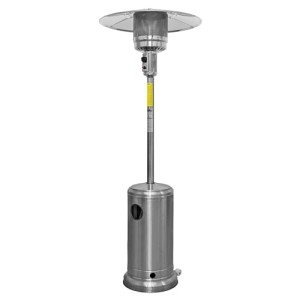How To Make An Amazing Instagram Video About Buy Gas Radiant Heaters
Buying Gas Radiant Heaters: A Comprehensive Guide
Gas radiant heaters have actually gained popularity recently for their performance and ability to provide immediate warmth. As more homeowners and companies search for ways to keep their spaces comfy, comprehending the features, advantages, and considerations when purchasing these heating units can be extremely helpful. This article explores the complexities of gas radiant heaters, aiding potential purchasers in making informed choices.
What are Gas Radiant Heaters?
Gas radiant heaters are devices that make use of propane or natural gas to release heat straight into a space. Instead of heating Fireplaces And Stoves , they warm items and people in their vicinity, supplying comfort quicker and efficiently. These heaters are popular for both indoor and outdoor settings due to their flexibility and efficiency.
Secret Features of Gas Radiant Heaters
- Direct Heating: Unlike conventional heaters that warm the air, gas radiant heaters offer direct warmth, making them an efficient option for quickly warming up areas.
- Mobility: Many models are available as portable systems, permitting them to be easily moved from one place to another.
- Fuel Variety: Gas radiant heaters can be powered by gas or propane, providing users versatility based upon schedule and preference.
- Adjustable Settings: Most gas radiant heaters featured adjustable heat settings, permitting users to customize the level of heat based upon their requirements.
Advantages of Gas Radiant Heaters
- Energy Efficiency: These heaters transform gas into heat efficiently, resulting in lower utility expenses compared to electrical heaters.
- Quick Heating: Radiant heat is felt practically instantly, making these heaters perfect for sudden temperature drops.
- Low Maintenance: Gas radiant heaters typically require less maintenance than electric designs, making them a problem-free choice.
- Environmentally Friendly: When powered by clean gas, these heaters can be a more environmentally sustainable choice compared to other heating methods.
Types of Gas Radiant Heaters
When it pertains to selecting a gas radiant heater, it's necessary to comprehend the various types readily available. Below are the most typical options:
- Indoor Gas Radiant Heaters: Designed for indoor spaces, these heaters are generally vented or unvented and often come with integrated security functions.
- Outdoor Gas Radiant Heaters: Commonly used in patio areas or outdoor dining areas, these heaters are developed to withstand the components.
- Wall-Mounted Gas Radiant Heaters: A space-saving choice, these units are ideal for smaller spaces and can be equipped with various heat outputs depending upon the location's needs.
- Freestanding Gas Radiant Heaters: These portable designs can be used in numerous locations, ideal for those who need versatility.
Buying Guide: How to Choose the Right Gas Radiant Heater
When buying a gas radiant heater, several elements must be considered to ensure you choose the best design for your space:
1. Heating Capacity
- Determined in BTUs (British Thermal Units), the heater's capacity identifies how much area it can effectively warm. Buyers need to evaluate their specific requirements based upon room size.
Room Size (sq ft)
Recommended BTUs (for Gas Radiant Heaters)
100 – 200
5,000 – 10,000 BTUs
200 – 400
10,000 – 20,000 BTUs
400 – 600
20,000 – 30,000 BTUs
600 – 800
30,000+ BTUs
2. Kind of Gas
- Think about whether you will be using propane or natural gas, as different heaters cater to various fuel types.
3. Safety Features
- Search for designs equipped with security functions such as automatic shut-off valves, tip-over security, and oxygen exhaustion sensing units.
4. Setup Requirements
- Some heaters might need professional installation, particularly vented designs. Make certain to think about the expenses and requirements associated with setup.
5. Portability
- If flexibility is important, consider portable models that can be easily moved from one place to another.
Setup and Maintenance
Gas radiant heaters are typically simple to install, especially portable designs. Nevertheless, vented options might require expert installation to guarantee they satisfy regional safety codes.
Upkeep normally involves:
- Regular cleansing to prevent dust accumulation.
- Inspecting gas connections and fittings for leakages.
- Guaranteeing security functions are functional.
Tip: Regular checks around the unit can assist extend its life-span and keep security.
Often Asked Questions (FAQs)
Q1: Are gas radiant heaters safe for indoor use?A1: Yes
, as long as they are effectively vented and geared up with required security features, they can be safely utilized indoors.
**Q2: Can gas radiant heaters be used in enclosed spaces?A2: Unvented gas heaters can posture threats in enclosed areas due to possible suffocation or carbon monoxide accumulation. Always guarantee adequate ventilation. Q3: How do I understand what size heater I need?A3: The suitable size depends on the location you mean to heat. Describe the BTU chart
above to determine your requirements. Q4: What is the distinction in between propane and natural gas heaters?A4: The main difference lies in their energy source
**; propane is provided by means of tanks, while gas is generally piped into homes. Q5: How can I take full advantage of efficiency?A5: Ensure the heater is appropriately sized for your space, maintain it frequently, and consider using it in combination
**with other heating approaches for optimum comfort. Gas radiant heaters can be an excellent addition to any home or organization, providing energy-efficient and fast heating solutions. By understanding the various types, functions, and considerations
when buying, purchasers can make educated choices that satisfy their heating needs. With the ideal choice, these heaters provide convenience, dependability, and a welcoming environment throughout chillier seasons.  ******
******